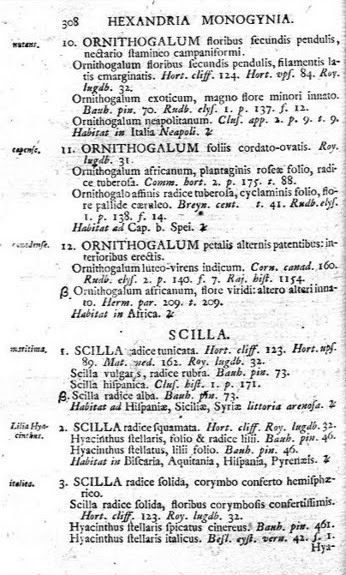|
Albert Hofmann
Albert Hofmann (11 January 1906 – 29 April 2008) was a Swiss chemist known for being the first to synthesize, ingest, and learn of the psychedelic effects of lysergic acid diethylamide (LSD). Hofmann's team also isolated, named and synthesized the principal psychedelic mushroom compounds psilocybin and psilocin. He authored more than 100 scientific articles and numerous books, including ''LSD: Mein Sorgenkind'' (''LSD: My Problem Child''). In 2007, he shared first place with Tim Berners-Lee on a list of the 100 greatest living geniuses published by ''The Daily Telegraph'' newspaper. Early life and education Albert Hofmann was born in Baden, Switzerland, on 11 January 1906. He was the first of four children to factory toolmaker Adolf Hofmann and Elisabeth ( Schenk) and was baptized Protestant. When his father became ill, Hofmann obtained a position as a commercial apprentice in concurrence with his studies. Owing to his father's low income, Albert's godfather paid for his e ... [...More Info...] [...Related Items...] OR: [Wikipedia] [Google] [Baidu] |
Baden, Switzerland
Baden (German language, German for "Thermal bath, baths"), sometimes unofficially, to distinguish it from Baden (other), other Badens, called Baden bei Zürich ("Baden near Zürich") or Baden im Aargau ("Baden in the Aargau"), is a town and a Municipalities of Switzerland, municipality in Switzerland. It is the main town or seat of the Baden (district, Aargau), district of Baden in the Cantons of Switzerland, canton of Aargau. Located northwest of Zürich in the Limmat Valley () mainly on the western side of the river Limmat, its mineral hot springs have been famed since at least the Switzerland in the Roman era, Roman era. Its official language is (the Swiss variety of Standard) Swiss Standard German, German, but the main spoken language is the local Alemannic German, Alemannic Swiss German (linguistics), Swiss-German dialect. the town had a population of over 19,000. Geography Downtown Baden is located on the left bank of the river Limmat in Limmat Valley, its eponym ... [...More Info...] [...Related Items...] OR: [Wikipedia] [Google] [Baidu] |
The Daily Telegraph
''The Daily Telegraph'', known online and elsewhere as ''The Telegraph'', is a British daily broadsheet conservative newspaper published in London by Telegraph Media Group and distributed in the United Kingdom and internationally. It was founded by Arthur B. Sleigh in 1855 as ''The Daily Telegraph and Courier''. ''The Telegraph'' is considered a newspaper of record in the UK. The paper's motto, "Was, is, and will be", was included in its emblem which was used for over a century starting in 1858. In 2013, ''The Daily Telegraph'' and ''The Sunday Telegraph'', which started in 1961, were merged, although the latter retains its own editor. It is politically conservative and supports the Conservative Party (UK), Conservative Party. It was moderately Liberalism, liberal politically before the late 1870s.Dictionary of Nineteenth Century Journalismp 159 ''The Telegraph'' has had a number of news scoops, including the outbreak of World War II by rookie reporter Clare Hollingworth, desc ... [...More Info...] [...Related Items...] OR: [Wikipedia] [Google] [Baidu] |
Nikethamide
Nikethamide is a stimulant which mainly affects the respiratory cycle. Widely known by its former trade name of Coramine, it was used in the mid-twentieth century as a medical countermeasure against tranquilizer overdoses, before the advent of endotracheal intubation and positive-pressure lung expansion. It is no longer commonly considered to be of value for such purposes. In alternate terminology, it is known as nicotinic acid diethylamide, which meaningfully emphasizes its laboratory origins, and of which its common name is derived as a blend. Uses It is useful for mountain climbers to increase endurance at high altitudes.Nikethamid , III-3.3, Toxcenter Available forms It is available as a short-acting |
Uterus
The uterus (from Latin ''uterus'', : uteri or uteruses) or womb () is the hollow organ, organ in the reproductive system of most female mammals, including humans, that accommodates the embryonic development, embryonic and prenatal development, fetal development of one or more Fertilized egg, fertilized eggs until birth. The uterus is a hormone-responsive sex organ that contains uterine gland, glands in its endometrium, lining that secrete uterine milk for embryonic nourishment. (The term ''uterus'' is also applied to analogous structures in some non-mammalian animals.) In humans, the lower end of the uterus is a narrow part known as the Uterine isthmus, isthmus that connects to the cervix, the anterior gateway leading to the vagina. The upper end, the body of the uterus, is connected to the fallopian tubes at the uterine horns; the rounded part, the fundus, is above the openings to the fallopian tubes. The connection of the uterine cavity with a fallopian tube is called the utero ... [...More Info...] [...Related Items...] OR: [Wikipedia] [Google] [Baidu] |
Analeptic
An analeptic, in medicine, is a type of central nervous system (CNS) stimulant. The term ''analeptic'' typically refers to respiratory stimulants (e.g., doxapram). Analeptics include a wide variety of medications used to treat depression, attention deficit hyperactivity disorder (ADHD), and respiratory depression. Analeptics can also be used as convulsants, with low doses causing patients to experience heightened awareness, restlessness, and rapid breathing. The primary medical use of these drugs is as an anesthetic recovery tool or to treat emergency respiratory depression. Other drugs of this category are prethcamide, pentylenetetrazole, and nikethamide. Nikethamide is now withdrawn due to risk of convulsions. Analeptics have recently been used to better understand the treatment of a barbiturate overdose. Through the use of agents, researchers were able to treat obtundation and respiratory depression. Medical uses Analeptics have been used throughout history for two main pu ... [...More Info...] [...Related Items...] OR: [Wikipedia] [Google] [Baidu] |
Lysergic Acid
Lysergic acid, also known as -lysergic acid and (+)-lysergic acid, is a precursor for a wide range of ergoline alkaloids that are produced by the ergot fungus and found in the seeds of '' Argyreia nervosa'' ( Hawaiian baby woodrose), and ''Ipomoea'' species ( morning glories, ololiuhqui, tlitliltzin). Amides of lysergic acid, lysergamides, are widely used as pharmaceuticals and as psychedelic drugs, e.g. lysergic acid diethylamide (LSD). Lysergic acid is listed as a Table I precursor under the United Nations Convention Against Illicit Traffic in Narcotic Drugs and Psychotropic Substances. The name Lysergic acid comes from the fact that it is a carboxylic acid, and it was first made by hydrolysis of various ergot alkaloids. Synthesis Laboratory Lysergic acid is generally produced by hydrolysis of natural lysergamides, but can also be synthesized in the laboratory by a complex total synthesis, for example by Robert Burns Woodward's team in 1956. An enantioselective total ... [...More Info...] [...Related Items...] OR: [Wikipedia] [Google] [Baidu] |
Glycoside
In chemistry, a glycoside is a molecule in which a sugar is bound to another functional group via a glycosidic bond. Glycosides play numerous important roles in living organisms. Many plants store chemicals in the form of inactive glycosides. These can be activated by enzymatic, enzyme hydrolysis, which causes the sugar part to be broken off, making the chemical available for use. Many such plant glycosides are used as medications. Several species of ''Heliconius'' butterfly are capable of incorporating these plant compounds as a form of chemical defense against predators. In animals and humans, poisons are often bound to sugar molecules as part of their elimination from the body. In formal terms, a glycoside is any molecule in which a sugar group is bonded through its anomeric carbon to another group via a glycosidic bond. Glycosides can be linked by an O- (an ''O-glycoside''), N- (a ''glycosylamine''), S-(a ''thioglycoside''), or C- (a ''C-glycoside'') glycosidic bond. Accord ... [...More Info...] [...Related Items...] OR: [Wikipedia] [Google] [Baidu] |
Scilla
''Scilla'' () is a genus of about 30 to 80 species of bulb-forming perennial plant, perennial herbaceous plants in the family Asparagaceae, subfamily Scilloideae. Sometimes called the squills in English, they are native to woodlands, subalpine zone, subalpine meadows, and seashores throughout Europe, Africa and the Middle East. A few species are also naturalized in Australasia and North America. Their flowers are usually blue, but white, pink, and purple types are known; most flower in early spring, but a few are autumn-flowering. Several ''Scilla'' species are valued as Ornamental plant, ornamental garden plants. Taxonomy Species of ''Scilla'' have been known since classical antiquity, being described by both Greek (Theophrastus (371–287 BC) and Dioscorides, Discorides (40–90 AD)) and Roman (Pliny the Elder, Pliny (23–79 AD)) writers. Theophrastus described ''Scilla hyacinthoides'' (''skilla''), and more briefly ''Scilla autumnalis, S. autumnalis'' and ... [...More Info...] [...Related Items...] OR: [Wikipedia] [Google] [Baidu] |
Pharmaceuticals
Medication (also called medicament, medicine, pharmaceutical drug, medicinal product, medicinal drug or simply drug) is a drug used to diagnose, cure, treat, or prevent disease. Drug therapy ( pharmacotherapy) is an important part of the medical field and relies on the science of pharmacology for continual advancement and on pharmacy for appropriate management. Drugs are classified in many ways. One of the key divisions is by level of control, which distinguishes prescription drugs (those that a pharmacist dispenses only on the medical prescription) from over-the-counter drugs (those that consumers can order for themselves). Medicines may be classified by mode of action, route of administration, biological system affected, or therapeutic effects. The World Health Organization keeps a list of essential medicines. Drug discovery and drug development are complex and expensive endeavors undertaken by pharmaceutical companies, academic scientists, and governments. As a ... [...More Info...] [...Related Items...] OR: [Wikipedia] [Google] [Baidu] |
Ergot
Ergot ( ) or ergot fungi refers to a group of fungi of the genus ''Claviceps''. The most prominent member of this group is '' Claviceps purpurea'' ("rye ergot fungus"). This fungus grows on rye and related plants, and produces alkaloids that can cause ergotism in humans and other mammals who consume grains contaminated with its fruiting structure (called ''ergot sclerotium''). ''Claviceps'' includes about 50 known species, mostly in the tropical regions. Economically significant species include ''C. purpurea'' (parasitic on grasses and cereals), ''C. fusiformis'' (on pearl millet, buffel grass), '' C. paspali'' (on dallis grass), ''C. africana'' (on sorghum) and ''C. lutea'' (on paspalum). ''C. purpurea'' most commonly affects outcrossing species such as rye (its most common host), as well as triticale, wheat and barley. It affects oats only rarely. ''C. purpurea'' has at least three races or varieties, which differ in their host specificity: *G1 – land grasses of op ... [...More Info...] [...Related Items...] OR: [Wikipedia] [Google] [Baidu] |
Drimia Maritima
''Drimia maritima'' ( syn. ''Urginea maritima'') is a species of flowering plant in the family Asparagaceae, subfamily Scilloideae (formerly the family Hyacinthaceae). This species is known by several common names, including squill, sea squill, sea onion, and maritime squill.''Drimia maritima'' (maritime squill). Royal Botanic Gardens, Kew. It may also be called red squill, particularly a form which produces red-tinged flowers instead of white. It is native to southern Europe, western Asia, and northern Africa. Description  This plant grows fro ...
This plant grows fro ...
[...More Info...] [...Related Items...] OR: [Wikipedia] [Google] [Baidu] |
Medicinal Plant
Medicinal plants, also called medicinal herbs, have been discovered and used in traditional medicine practices since prehistoric times. Plants synthesize hundreds of chemical compounds for various functions, including Plant defense against herbivory, defense and protection against insects, fungi, Plant disease resistance, diseases, against parasites and herbivorous mammals. The earliest historical records of herbs are found from the Sumerian civilization, where hundreds of medicinal plants including opium are listed on clay tablets, . The Ebers Papyrus from ancient Egypt, , describes over 850 plant medicines. The Greek physician Pedanius Dioscorides, Dioscorides, who worked in the Roman army, documented over 1000 recipes for medicines using over 600 medicinal plants in , ; this formed the basis of pharmacopoeias for some 1500 years. Drug research sometimes makes use of ethnobotany to search for pharmacologically active substances, and this approach has yielded hundreds of use ... [...More Info...] [...Related Items...] OR: [Wikipedia] [Google] [Baidu] |







